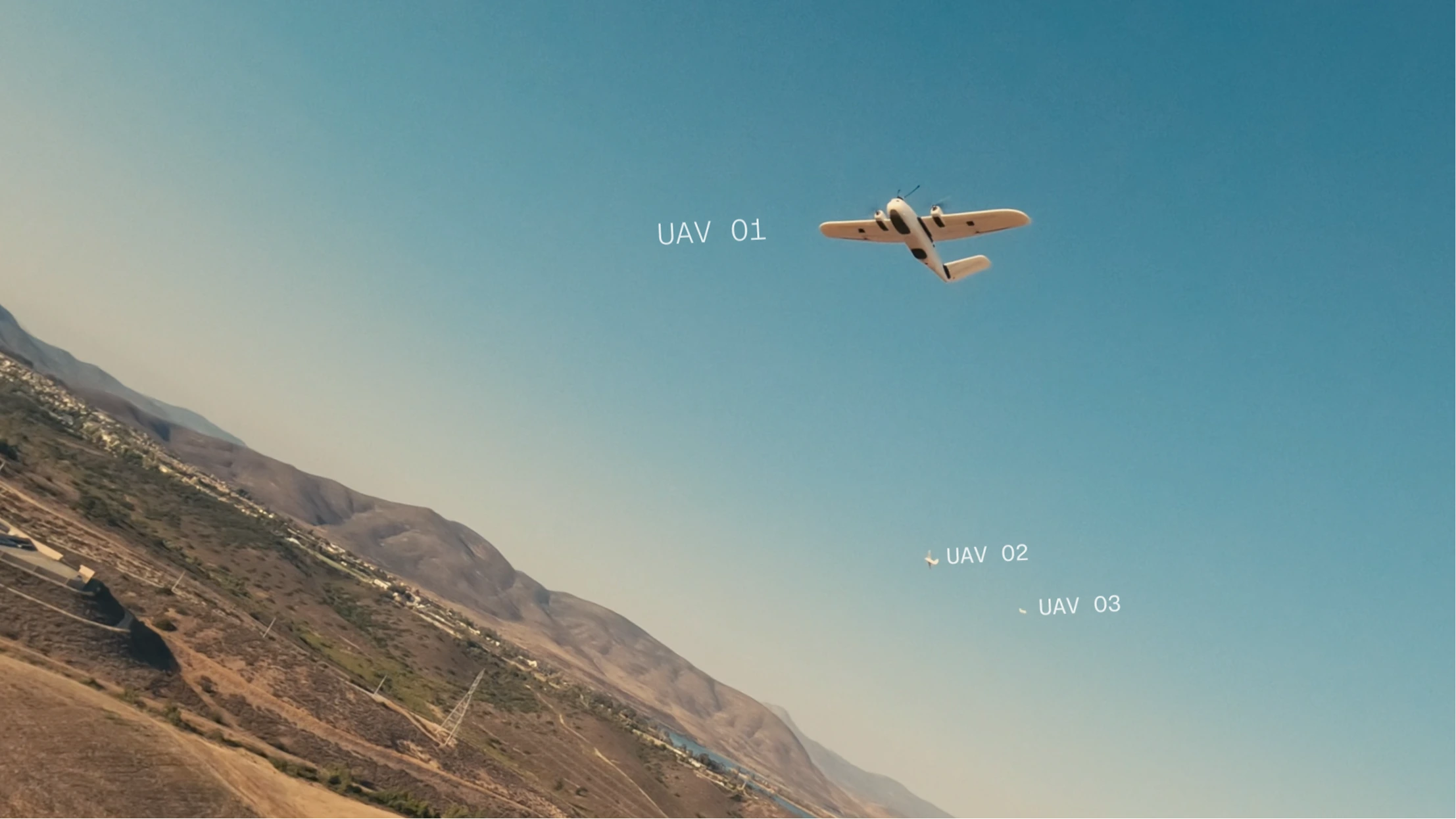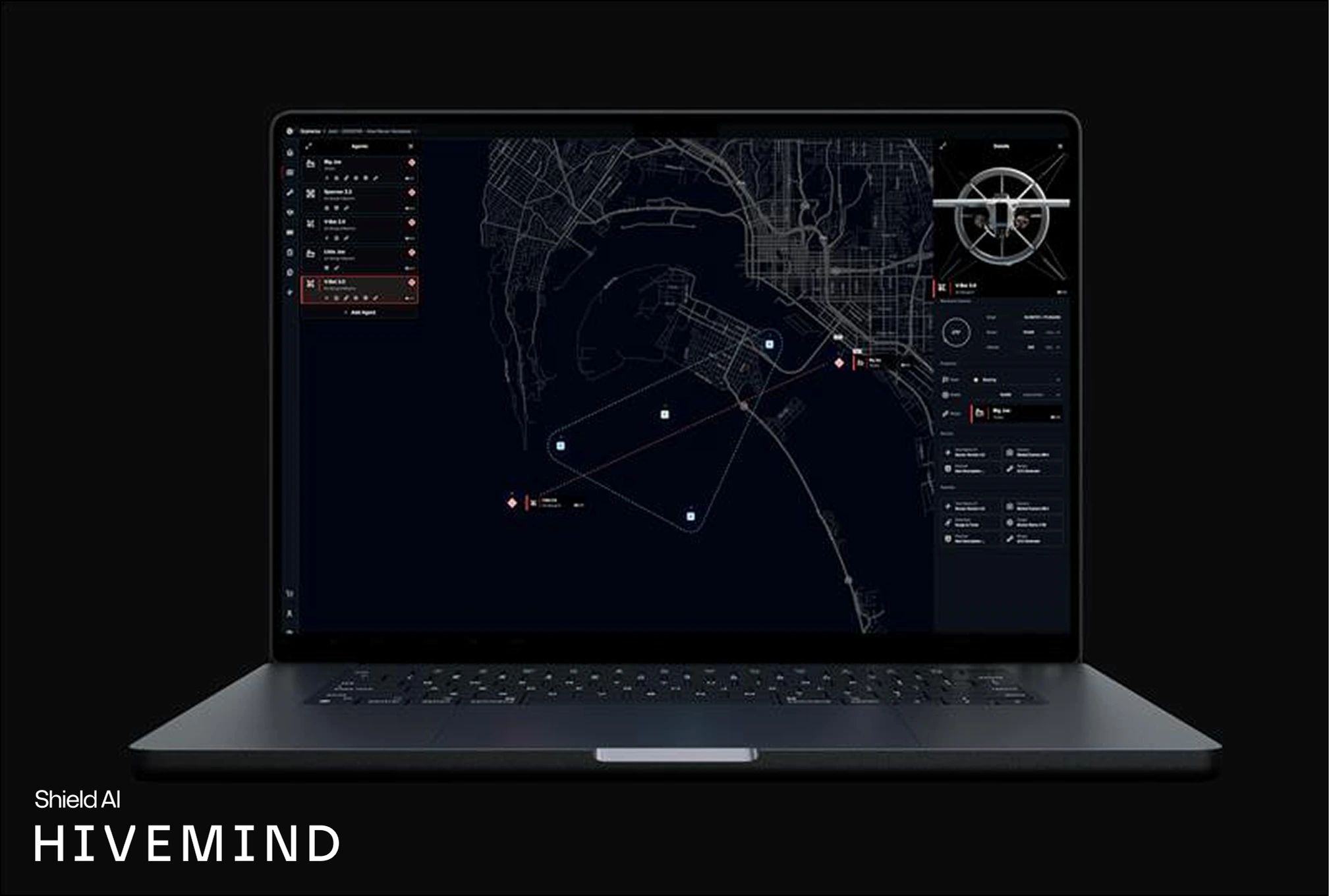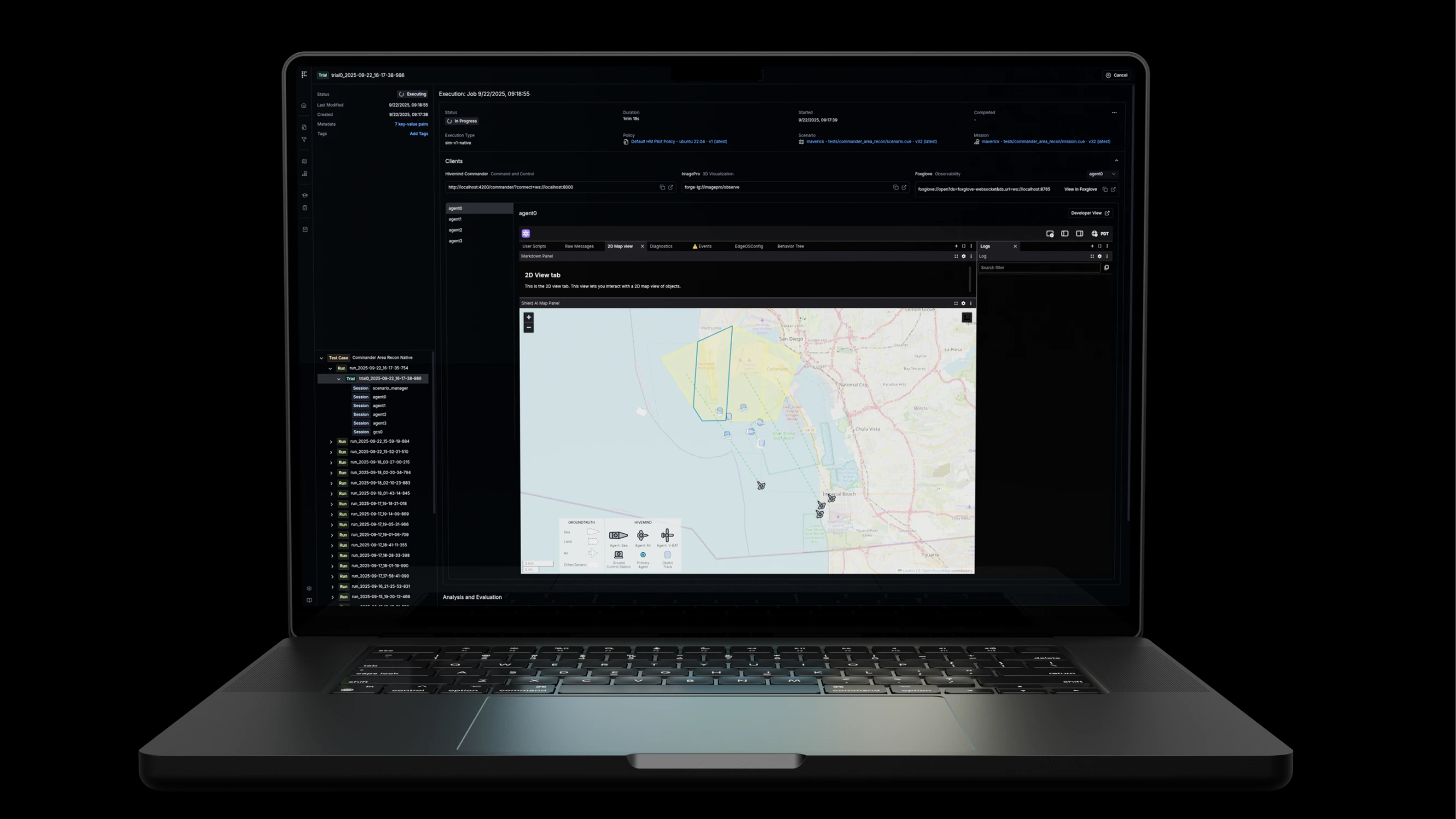


Shield AI builds an AI-powered autonomy platform to protect service members and civilians by enabling platforms across domains to operate intelligently.
Founded: 2015, San Diego, California, USA
Size: ~1,000 employees
Accelerates autonomy development with real-time insight into decision systems.
Enables deep customization of visualization workflows without compromising performance.
Equips every Hivemind deployment with powerful out-of-the-box tools to understand and validate autonomous behavior.
“Foxglove gives our team a shared, real-time view into system behavior—making it easier to troubleshoot, improve, and deploy advanced autonomy with confidence. Paired with Hivemind, it accelerates development by turning complex decisions into clear, actionable insight.” Stefan Jorgensen, Senior Staff Engineer, Shield AI
Shield AI’s flagship autonomy product, Hivemind Pilot, enables systems to carry out complex missions using fully autonomous decision-making at the edge. Supporting it is Hivemind Forge—a full-featured autonomy development environment that lets developers prototype, test, and deploy quickly. To make that possible, engineers and operators alike need the ability to understand what’s happening inside the system, resolve issues quickly, and assess improvements as they happen. That’s where Foxglove comes in. Embedded directly into Forge, Foxglove gives Shield AI and its customers the clarity and speed they need to build world-class autonomous systems—faster and with greater confidence.

As Shield AI began fielding autonomy with defense customers, iteration speed became critical—but legacy tools became a liability. Old workflows didn’t just slow teams down; they made the autonomy harder to trust. Without a clear way to understand why an aircraft chose a specific flight path, operators were left with black-box behaviors in high-stakes environments.
Foxglove changed that. Its modern, extensible visualization platform made it easy to inspect behavior, trace logic, and uncover issues in real time. Instead of patching together brittle, ROS-dependent tools, developers could build dynamic panels tailored to their systems. With Forge, teams no longer had to pore over logs hours after a flight—they could debug, tune, and verify autonomy as it happened. Together, Foxglove and Forge not only sped up development but also made autonomy easier to interpret and understand, building greater trust in the systems we deploy.
“Foxglove eliminated the overhead of maintaining internal visualization tools, letting our engineers focus on what matters most—advancing core autonomy.” Stefan Jorgensen, Senior Staff Engineer, Shield AI
Shield AI embedded Foxglove directly into Forge's core. Foxglove’s cloud-native architecture, multi-platform support, and ROS-independence made it ideal for Shield AI’s evolving stack. Engineers quickly built mission-specific tools for inspecting behavior trees, configuring agents, monitoring critical events, and visualizing internal state.
Every Hivemind deployment ships with Foxglove, giving customers deep visibility into autonomy operations from day one. These aren’t support tools—they’re operational infrastructure. Whether it’s a military developer validating sensor alignment, a test pilot reviewing decision traces, or a mission lead analyzing logs post-flight, Foxglove provides a shared interface to understand autonomy operations. Paired with Forge, it empowers customers to use the Hivemind SDK to build sovereign autonomy capabilities they can fully trust—and do so in record time.
In a complex find, fix, and track mission, a fleet of Hivemind-powered autonomous aircraft could be tasked with locating multiple high-value objects across a broad operational area—all while navigating no-fly zones and managing comms in GPS-denied airspace. Each agent autonomously claims part of the search grid, plans its route, and coordinates sensor sweeps with the rest of the team. If one aircraft identifies a potential object of interest, it reassigns itself to investigate, handing off its responsibilities to others. Simultaneously, another agent might reposition to act as a “bridge” agent—positioning strategically extending the team’s mesh network to preserve communications.
All of this happens onboard, without centralized control. And with Foxglove, ground teams can observe it all in real time—watching agents self-organize, adapt, and execute mission logic with precision. It transforms autonomy from something opaque into something observable—making it possible not just to deploy intelligent systems, but to understand them.
“With Foxglove and the SDK, anyone on the team can contribute—what used to take months now takes days, and for our customers, that means reaching first autonomous flights in weeks instead of years.” Stefan Jorgensen, Senior Staff Engineer, Shield AI
What once took weeks now happens in days. When Hivemind Pilot changes altitude during a resupply test, developers immediately see why—and in collaboration with the vast suite of capabilities that Hivemind provides, they can tweak and retest in the same day. This real-time feedback loop supercharges the fly-fix-fly rhythm, enabling capabilities that once took years to develop to now come online in weeks.

Foxglove ships with every Hivemind deployment, supporting U.S. and allied customers in labs, test flights, and field operations. It is part of the daily autonomy development cycle—driving faster iteration, tighter collaboration, and greater confidence in the systems we build. As the U.S. and its allies modernize their approach to airpower, Shield AI continues to push the frontier of autonomous capability with Hivemind. Foxglove is there at every step, making autonomy as understandable as it is unstoppable.